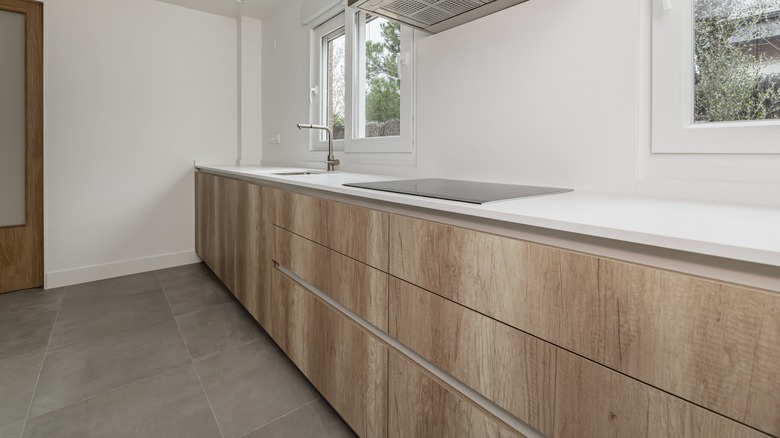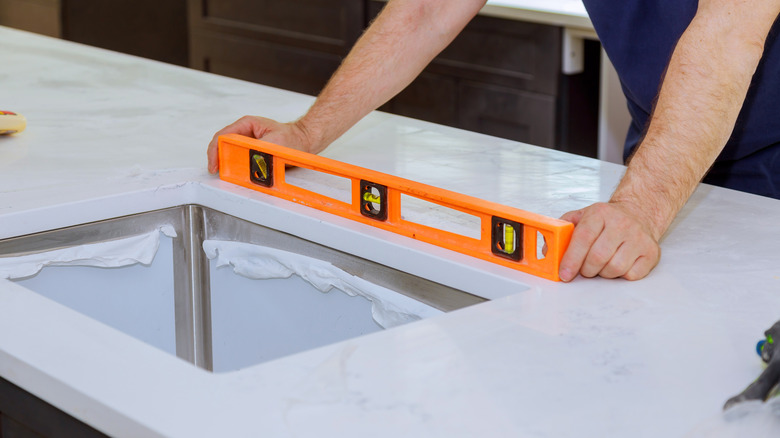The Hidden Downside Of Synthetic Stone Countertops
Synthetic stone countertops are an incredibly versatile choice that comes in a variety of style options to align with any home interior. They are also resistant to UV rays that seep into your home through your windows, which can discolor and damage other countertop options, so synthetic stone is a good choice if your home gets lots of direct sunlight. Despite all of these perks, there's a hidden downside of synthetic stone countertops that you need to be aware of to help you determine whether they are the right fit for you. Unfortunately, synthetic stone countertops have specialized installation requirements.
This is because synthetic stone and tile are made of thin material that can easily break if mishandled. This means that it may not be a practical countertop choice for you if you need to complete a DIY installation in order to save money. Synthetic stone is best installed by a professional who has the skills and experience to successfully place the material without cracking or shattering it. If you have the budget to pay professionals to install your synthetic stone countertops properly, this may not be a concern. However, if you were hoping to be able to install new countertops yourself without mistakes, you may want to opt for a different material that doesn't have specialized installation requirements.
Specialized installation requirements complicate synthetic stone countertops
Due to the thinness of some synthetic stone countertop materials, the installation process can be rather tricky. You need to avoid chipping or cracking them. However, this can be difficult because the stone should be cut to size with precision before installation. Professionals can pull this off without causing damage by using a wet saw with a diamond blade to make precise cuts in the material. An angle grinder would be the better choice for making super intricate cuts.
After the material is cut to size with care to avoid cracking or shattering it, the next step is to secure it in place with construction adhesive. You can then press the synthetic stone into place and finish up by applying grout and sealant. It's clear that this process requires a great deal of care and precision, especially cutting the stone. If you would prefer a countertop material that doesn't have these specialized installation requirements, there are other choices to explore. For example, solid surface and laminate are both countertop materials that could be installed easily by experienced DIYers. Alternatively, you could also simply opt for installing a countertop overlay as a less risky option than synthetic stone.

